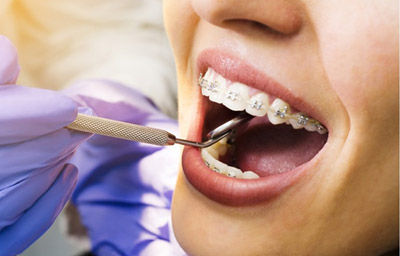The Ultimate Guide To Causey Orthodontics
Table of ContentsGet This Report about Causey OrthodonticsCausey Orthodontics Things To Know Before You Get ThisCausey Orthodontics for DummiesEverything about Causey OrthodonticsNot known Details About Causey Orthodontics
Ignoring occlusal relationships, it was common to eliminate teeth for a variety of dental issues, such as malalignment or congestion. The idea of an undamaged dentition was not commonly valued in those days, making bite relationships appear irrelevant. In the late 1800s, the concept of occlusion was important for producing reliable prosthetic replacement teeth.As these ideas of prosthetic occlusion proceeded, it became an indispensable tool for dentistry. It remained in 1890 that the job and influence of Dr. Edwards H. Angle began to be really felt, with his payment to modern orthodontics especially noteworthy. Originally focused on prosthodontics, he educated in Pennsylvania and Minnesota prior to guiding his attention in the direction of oral occlusion and the treatments required to maintain it as a typical problem, therefore coming to be recognized as the "daddy of modern orthodontics".

The principle of excellent occlusion, as postulated by Angle and incorporated right into a classification system, made it possible for a shift in the direction of dealing with malocclusion, which is any variance from typical occlusion. Having a complete set of teeth on both arcs was very searched for in orthodontic therapy due to the requirement for specific relationships in between them.
How Causey Orthodontics can Save You Time, Stress, and Money.
As occlusion came to be the essential top priority, facial percentages and aesthetics were overlooked - orthodontist near me. To achieve perfect occlusals without utilizing outside pressures, Angle postulated that having best occlusion was the best way to gain maximum facial aesthetic appeals. With the passing away of time, it became rather evident that even a remarkable occlusion was not suitable when considered from a visual factor of sight
Charles Tweed in America and Raymond Begg in Australia (that both examined under Angle) re-introduced dental care removal into orthodontics during the 1940s and 1950s so they might improve face esthetics while likewise guaranteeing much better stability concerning occlusal connections. In the postwar period, cephalometric radiography started to be used by orthodontists for measuring adjustments in tooth and jaw placement brought on by growth and treatment. It became evident that orthodontic treatment might adjust mandibular development, resulting in the formation of practical jaw orthopedics in Europe and extraoral force actions in the United States. These days, both practical appliances and extraoral devices are applied around the world with the objective of changing development patterns and types. Consequently, pursuing true, or at the very least boosted, jaw partnerships had ended up being the main objective of treatment by the mid-20th century.
Our Causey Orthodontics Statements
 The American Journal of Orthodontics was developed for this purpose in 1915; prior to it, there were no scientific objectives to follow, nor any specific category system and braces that did not have attributes. Until the mid-1970s, dental braces were made by covering metal around each tooth. With advancements in adhesives, it came to be feasible to instead bond steel brackets to the teeth.
The American Journal of Orthodontics was developed for this purpose in 1915; prior to it, there were no scientific objectives to follow, nor any specific category system and braces that did not have attributes. Until the mid-1970s, dental braces were made by covering metal around each tooth. With advancements in adhesives, it came to be feasible to instead bond steel brackets to the teeth.Andrews provided an informative definition of the optimal occlusion in long-term teeth. This has had purposeful results on orthodontic treatments that are carried out on a regular basis, and these are: 1. Appropriate interarchal connections 2. Proper crown angulation (pointer) 3. Proper crown inclination (torque) 4. No rotations 5. Tight contact factors 6. Flat Contour of Spee (0.02.5 mm), and based upon these concepts, he uncovered a therapy system called the straight-wire device system, or the pre-adjusted edgewise system.
The benefit of the design hinges on its brace and archwire mix, which needs only marginal wire flexing from the orthodontist or medical professional (best orthodontist). It's appropriately called after this function: the angle of the slot and density of the brace base inevitably determine where each tooth is positioned with little requirement for additional control
All about Causey Orthodontics
Both of these systems employed the same braces for each and every tooth and necessitated the flexing of an archwire in 3 airplanes for finding teeth in their wanted placements, with these bends determining supreme placements. When it involves orthodontic appliances, they are split into two types: removable and repaired. Detachable devices can be handled and off by the client as called for.

Hence, nearly all contemporary set appliances can be taken into consideration variants on this edgewise device system. Early 20th-century orthodontist Edward Angle made a significant contribution to the world of dental care. He created 4 distinctive appliance systems that have actually been used as the basis for several orthodontic treatments today, disallowing a few exceptions.
A Biased View of Causey Orthodontics

The cable ended in a thread, and to relocate forward, a flexible nut was made use of, which enabled a rise in circumference. By ligation, each private tooth was connected to this large archwire (best orthodontist). Due to its restricted series of activity, Angle was not able to accomplish precise tooth placing with an E-arch
These tubes held a firm pin, which can be repositioned at each visit in order to relocate them in position. Referred to as the "bone-growing device", this contraption was theorized to encourage healthier bone growth as a result of its potential for moving pressure directly to the origins. However, implementing it proved frustrating in truth.
Comments on “The smart Trick of Causey Orthodontics That Nobody is Talking About”